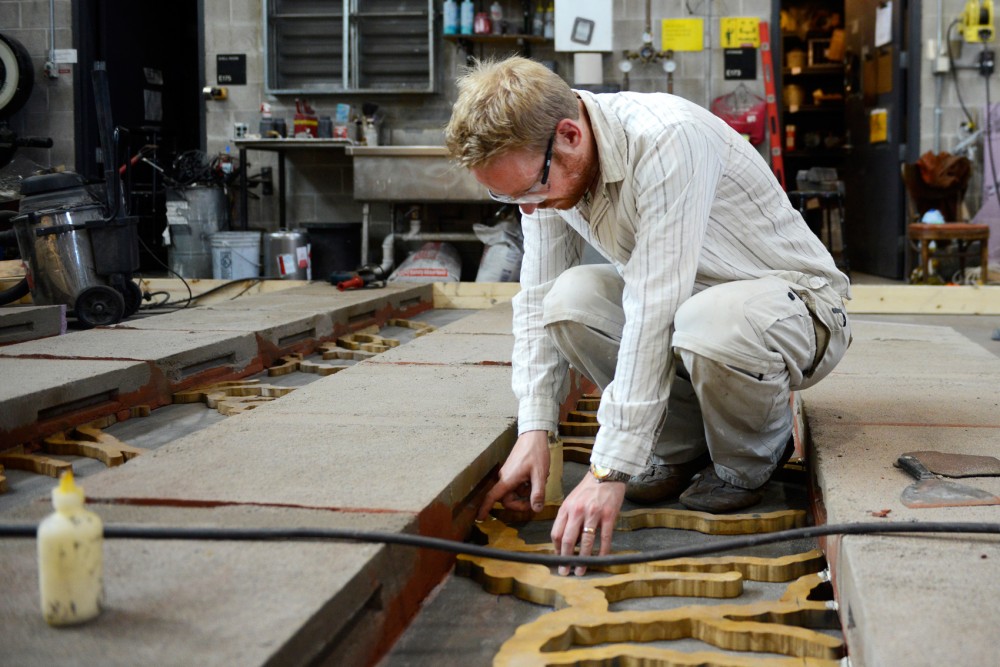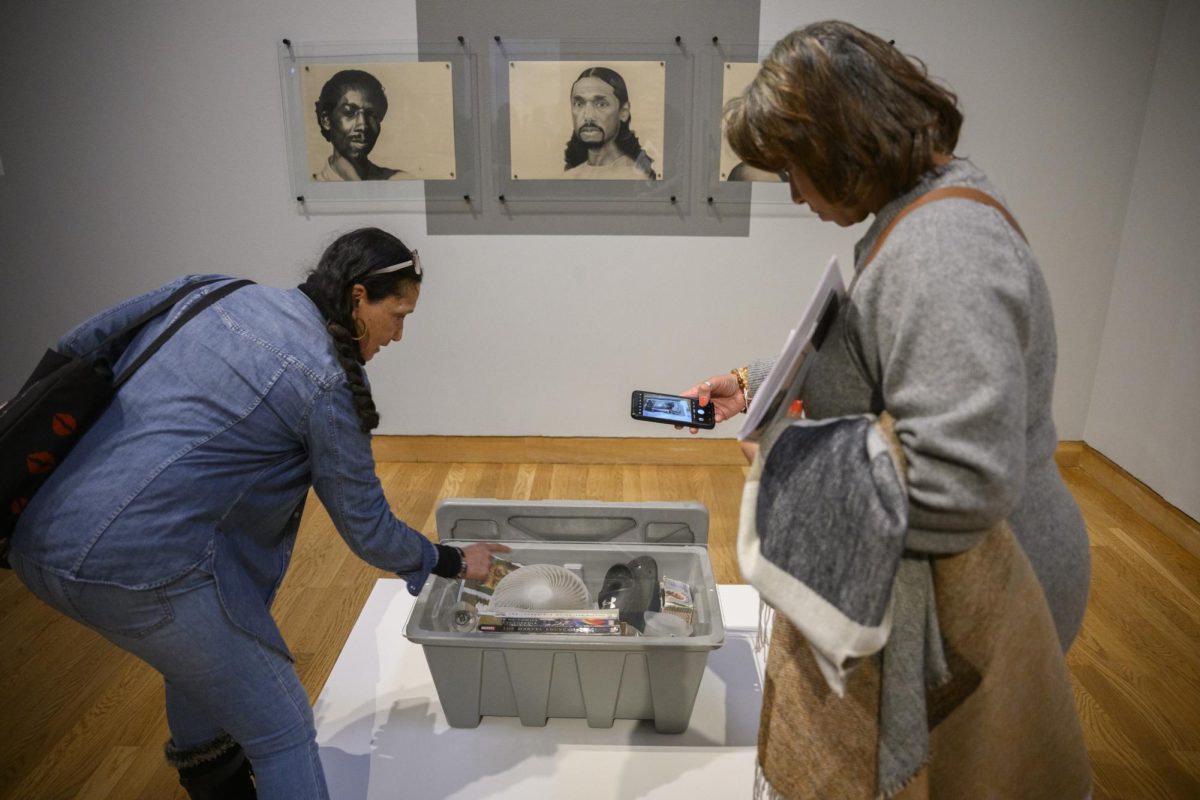The University of Minnesota will be a central hub for Northern Spark, an all-night art festival throughout Minneapolis on Saturday, but a few staff members and
students are planning to showcase their work at the annual event this year.
Projects called “CityScope” and “River of Iron” feature the work of students, faculty members and recent graduates, who say their efforts will hopefully provide forward momentum for more University students to get involved in the future.
“We’re successful enough, and we’ve started enough of a conversation that more University students would be asked to participate in [Northern Spark] or have the confidence to engage on their own,” second-year graduate student Patrick Moffett said. “That is a missing component in the arts community.”
A team of undergraduates, graduate students and former students led by assistant art professor Tamsie Ringler mapped the Mississippi River and divided the image into squares.
The project symbolizes human connection to the Earth — Ringler is an environmental activist — and the importance of sustaining and preserving our ecosystems.
On Saturday, Ringler and her students will pour iron onto the large map in sections. The project will lay on the lower lawn of the Weisman Art Museum, and the iron’s illuminating glow will be visible for festivalgoers from the Washington Avenue Bridge. Because of the painstaking precision and the project’s scope and size, the pour
will be an all-night endeavor lasting until dawn.
Last Wednesday, Ringler and the students chipped old iron radiators into Dorito-sized pieces at the University foundry to prepare the furnace. Clanks filled the air as sharp shards flew around. No one was injured thanks to masks and durable work wear.
“[It’s] possibly the least pleasant part of the whole project, but there’s
something satisfying seeing where the metal came from,” recent graduate Will Lakey said.
Because metal cools at a fast rate, it’s feasible to complete the interactive art project during the event’s nighttime hours.
“We’ll probably be walking over the mold, shimmying over the molten river, which will be its own challenge,” recent graduate Scott Kamlah said.
Despite the grit involved in hacking away at radiators, a computer program laser-cut the contours of the rivers with speed and precision.
“Traditionally, this would’ve been done with a jigsaw — [that] would’ve taken you forever,” Ringler said. “This was just laid on a bed, and a computer … was able to cut out [each section] in about 10 minutes.”
The breathtaking views of Minneapolis from West River Parkway inspire artists and commoners alike, including adjunct assistant architecture professor Molly Reichert.
Reichert, who has participated in Northern Spark in the past, taught a half-semester class during the spring in which she assembled a team of graduate students to
create a project for the festival.
After using a West River Parkway location for previous projects, Reichert found the milieu fitting for the class’s new project, which included capturing images of the mill ruins and the neighborhood’s historic building with a periscope.
“I think a lot of Northern Spark’s pieces are more ephemeral,” Reichert said. “What’s unique about this compared to many built projects that architecture students design or build is that this is dynamic.”
The periscope’s angles give off a kaleidoscopic effect. Different images of the city will appear in each of the periscope’s triangles.
Three similar-size rectangular cubes feature muslin designs and steel cutouts that project shadows of the Mill District. The structures surround the periscope and further magnify the ethereal visual experience.
Reichert led 13 students in building the kinetic project. But the team’s size proved to be a challenge, considering the time it was allowed for completing the project and lack of finalized blueprints.
“We started with the idea of the frames, and that manufacturing [happened] a week before we finalized designs of the other structures,” Moffett said. “Even then, it was [a] very design-as-we-built-along process.”
By focusing on building instead of drafting, architecture students gain a different understanding of how their field and the skills they use apply to mediums outside of their major.
“It’s such a great opportunity to get out into the public realm,” Reichert said, “also, for architecture students to conceptualize and realize something they’ve designed.
Typically, in architecture school, you’re making a representation of your ideas rather than really making it.”








